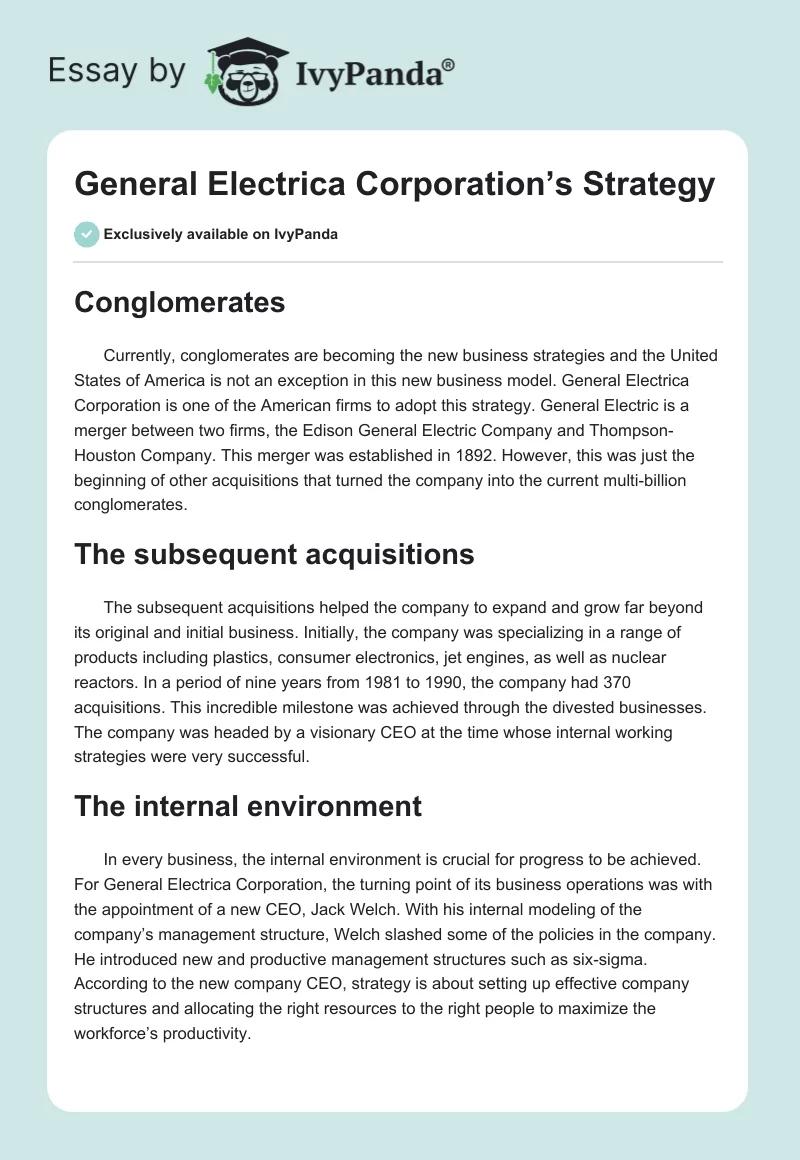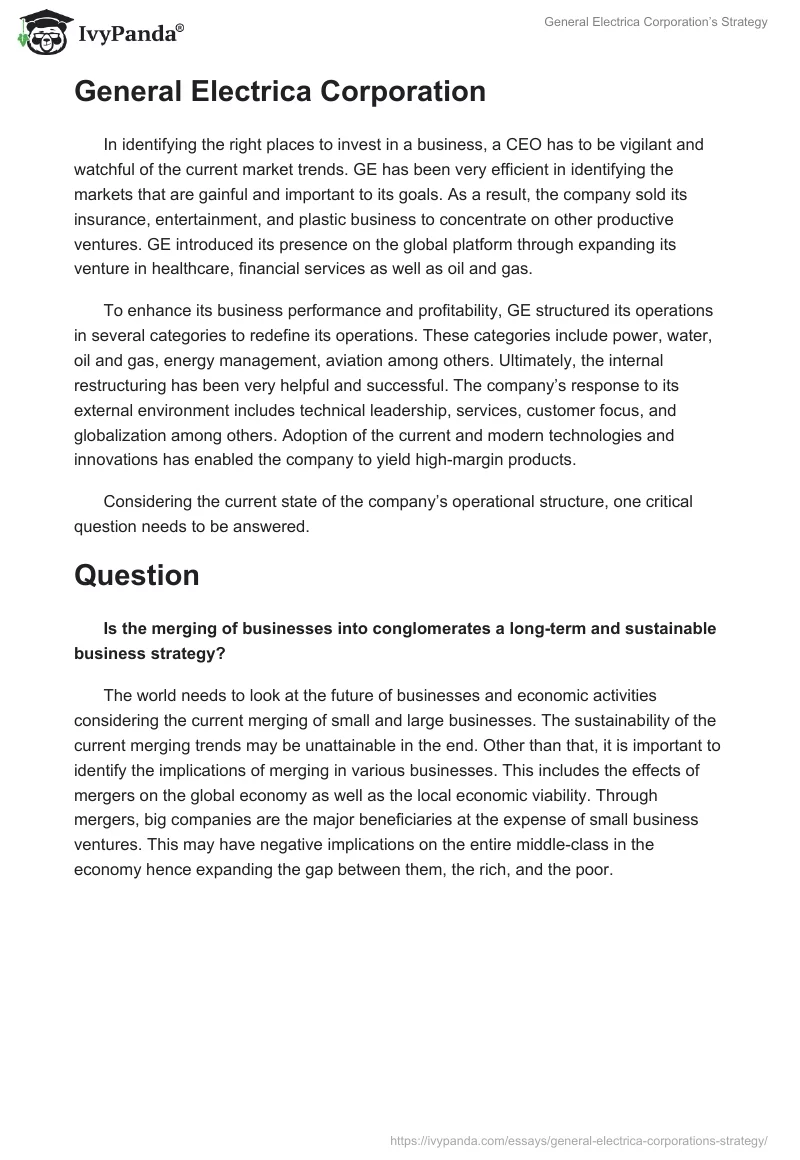Conglomerates
Currently, conglomerates are becoming the new business strategies and the United States of America is not an exception in this new business model. General Electrica Corporation is one of the American firms to adopt this strategy. General Electric is a merger between two firms, the Edison General Electric Company and Thompson-Houston Company. This merger was established in 1892. However, this was just the beginning of other acquisitions that turned the company into the current multi-billion conglomerates.
The subsequent acquisitions
The subsequent acquisitions helped the company to expand and grow far beyond its original and initial business. Initially, the company was specializing in a range of products including plastics, consumer electronics, jet engines, as well as nuclear reactors. In a period of nine years from 1981 to 1990, the company had 370 acquisitions. This incredible milestone was achieved through the divested businesses. The company was headed by a visionary CEO at the time whose internal working strategies were very successful.
The internal environment
In every business, the internal environment is crucial for progress to be achieved. For General Electrica Corporation, the turning point of its business operations was with the appointment of a new CEO, Jack Welch. With his internal modeling of the company’s management structure, Welch slashed some of the policies in the company. He introduced new and productive management structures such as six-sigma. According to the new company CEO, strategy is about setting up effective company structures and allocating the right resources to the right people to maximize the workforce’s productivity.
General Electrica Corporation
In identifying the right places to invest in a business, a CEO has to be vigilant and watchful of the current market trends. GE has been very efficient in identifying the markets that are gainful and important to its goals. As a result, the company sold its insurance, entertainment, and plastic business to concentrate on other productive ventures. GE introduced its presence on the global platform through expanding its venture in healthcare, financial services as well as oil and gas.
To enhance its business performance and profitability, GE structured its operations in several categories to redefine its operations. These categories include power, water, oil and gas, energy management, aviation among others. Ultimately, the internal restructuring has been very helpful and successful. The company’s response to its external environment includes technical leadership, services, customer focus, and globalization among others. Adoption of the current and modern technologies and innovations has enabled the company to yield high-margin products.
Considering the current state of the company’s operational structure, one critical question needs to be answered.
Question
Is the merging of businesses into conglomerates a long-term and sustainable business strategy?
The world needs to look at the future of businesses and economic activities considering the current merging of small and large businesses. The sustainability of the current merging trends may be unattainable in the end. Other than that, it is important to identify the implications of merging in various businesses. This includes the effects of mergers on the global economy as well as the local economic viability. Through mergers, big companies are the major beneficiaries at the expense of small business ventures. This may have negative implications on the entire middle-class in the economy hence expanding the gap between them, the rich, and the poor.


